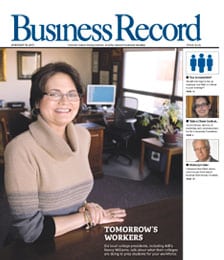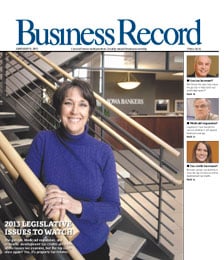Paint maker IPM Group uses purchase to expand south

Ten years after his last acquisition, Tom Goldman has done it again. On March 13, Goldman’s IPM Group Inc., the paint manufacturer whose products have coated everything from Titan rockets to billboards in New York City’s Times Square and rooms in Terrace Hill, bought Sterling Paint Inc. of Little Rock, Ark.
The move gives IPM, which makes and sells paint mostly to home builders, contractors and architects in the Midwest, a new presence in Arkansas, as well as more stores in Missouri. Sterling Paint, which makes and sells paint under the Sterling Paint name, had operated 11 stores in those states and another in Texas that IPM has since closed.
It also indicates that IPM, a middle weight competitor in an industry where the bulk of sales are garnered by just a few large companies, continues to pick a prosperous path among huge competitors, which include The Sherwin-Williams Co. and Akzo Nobel N.V. The five biggest paint companies control 80 percent of the market, Goldman said.
“This industry is made up of giants and regional companies,” Goldman said. “The regional companies, like us, are consolidating.”
Roughly 10 years ago, Goldman led a purchase of the paint division of Farmland Industries Inc., an acquisition that brought IPM’s employment to about 200. IPM also makes and sells paint for industrial and residential applications.
With the acquisition, IPM will have annual sales of about $50 million and more than 300 employees. Both IPM and Sterling are privately held – in IPM’s case by Goldman’s family – and financial terms of the transaction weren’t disclosed. Goldman said IPM should be able to pay off the acquisition in three years.
Bankers Trust Co. is IPM’s primary banker, Goldman said. LaSalle Bank N.A. of Chicago also handled some financial details of the acquisition, he said.
Goldman said he is interested in additional acquisitions and that he “has some potential candidates.”
Before the Sterling purchase, IPM had 34 stores in nine states: North Dakota, South Dakota, Nebraska, Minnesota, Wisconsin, Illinois, Iowa, Missouri and Kansas. It employed about 270 workers.
IPM, which changed its name from Iowa Paint Manufacturing Co. after the purchase, intends to continue selling Sterling’s paint under the Sterling brand. The company plans to step up customer service and will work to win new customers, Goldman said. Sterling “was not as aggressive as they could have been with customers,” Goldman said.
IPM is also developing new types of paints and will likely focus on the commercial construction industry and on developing more custom types of paint in the near future.
“We see that as a major opportunity,” said Marty Herrmann, IPM’s vice president of operations.
IPM and Sterling, whose paint will be used in the Clinton Presidential Center, former President Bill Clinton’s presidential library, had held talks about an acquisition several times over the past decade, Goldman said.
Sterling was founded in 1914 and had about 100 workers. Jim Adamson III, its president and chief executive, and his family controlled the company.
Following the acquisition, IPM closed Sterling’s paint making facilities, its warehouse and its administrative center, cutting about half of the company’s workforce.
In the weeks after the sale was completed, Goldman led a team of 25 IPM workers to Little Rock to collect Sterling’s massive inventory of paint. Over a three-day period, the group filled 35 semitrailor truck with 135,000 gallons of paint. All told, the team moved 2 million pounds of paint, Goldman said.
The paint was brought to Des Moines and stored in IPM’s 110,000-square-foot warehouse, which is located near the corner of Second and University avenues. The company also owns a 100,000-square-foot distribution center on Northeast 14th Street.
IPM has hired about 50 of Sterling’s employees, most of whom work in the company’s stores. IPM has also hired additional workers to handle the higher volumes of paint at its warehouse and its distribution center. Though IPM’s paint manufacturing facility has capacity to expand production, the company might have to add workers to handle the added workload, Goldman said.
IPM also distributes a vinyl product from its Comwall Wallcovering division that’s used by home builders, including the nation’s No. 1 residential home builder, Pulte Homes Inc. IPM was founded in 1933 as the Independent Paint Co. Goldman’s father, Harold, bought the company in 1952 and changed the name to Iowa Paint. At that time, the company had one store and $800,000 in annual sales.
When Goldman was named president in 1976, Iowa Paint had 11 stores. He bought a controlling stake in the company in 1986.







